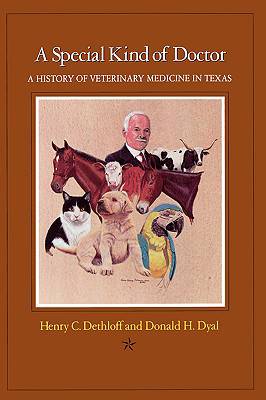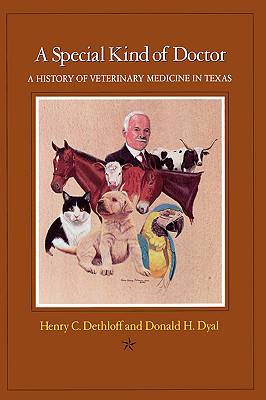
- Retrait gratuit dans votre magasin Club
- 7.000.000 titres dans notre catalogue
- Payer en toute sécurité
- Toujours un magasin près de chez vous
- Retrait gratuit dans votre magasin Club
- 7.000.0000 titres dans notre catalogue
- Payer en toute sécurité
- Toujours un magasin près de chez vous
A Special Kind of Doctor
A History of Veterinary Medicine in Texas
Henry C Dethloff, Donald H Dyal
Livre broché | Anglais
24,45 €
+ 48 points
Description
The story of veterinary medicine is a story of the human-animal bond and of a very special kind of doctor who works at that interface. It is a story of science, of professionalism, of practical experience. In Texas--with the longest international boundary of any state, with a larger and more diverse animal population than most, and with one of the highest per capita level of pet ownership--the challenges and opportunities have been especially great. Whether dosing a herd of three-hundred-pound calves with oral medication or treating a baboon in a local zoo for a ruptured disk, the veterinarian must rely on professional training. Such training has been available in Texas since 1888, when Dr. Mark Francis, eventually one of the most distinguished practitioners in the United States, became head of the fledgling program at the Agricultural and Mechanical College of Texas. Francis quickly established research and public health activities as companions to teaching at the school. To forge a working network and maintain standards, the state's veterinarians in 1903 formed the Texas Veterinary Medical Association (TVMA). From international campaigns to eradicate foot-and-mouth disease to ultra-sound applications for military working dogs and the examination of space-flight chimpanzees, the veterinary medicine profession in Texas has faced and met many challenges. It has expanded to practice medicine for the exotics imported into the state and to provide care for the companion animals increasingly bringing comfort to the elderly and disabled. Working from the archives of the TVMA and of Texas A&M University's College of Veterinary Medicine, the authors have recorded the history of the profession and its organizational arm in Texas. They have set it in the context of the national profession and of larger events in the society. Veterinary medicine, like human medicine, has undergone enormous change in the past century; this book tells the story of that change.
Spécifications
Parties prenantes
- Auteur(s) :
- Editeur:
Contenu
- Nombre de pages :
- 232
- Langue:
- Anglais
Caractéristiques
- EAN:
- 9781585440689
- Date de parution :
- 01-12-91
- Format:
- Livre broché
- Format numérique:
- Trade paperback (VS)
- Dimensions :
- 154 mm x 230 mm
- Poids :
- 385 g

Les avis
Nous publions uniquement les avis qui respectent les conditions requises. Consultez nos conditions pour les avis.






